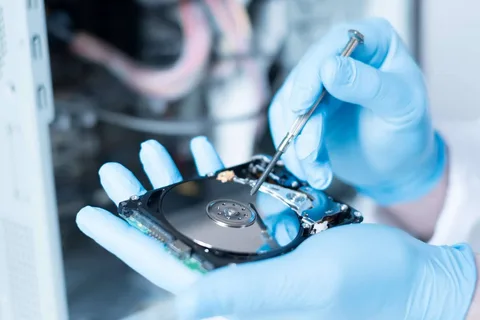In the world of data recovery, Solid State Drives (SSDs) pose unique challenges compared to traditional hard drives. When an SSD fails, recovering data can be complex and requires a precise approach. One of the most effective methods employed by professionals is using donor SSD parts. This essential guide to using donor SSD parts for successful data recovery explains how this technique works and why it is critical for recovering data from damaged SSDs.
Understanding SSD Failures and Data Recovery Challenges
Unlike traditional spinning hard drives, SSDs store data on flash memory chips. While this technology improves speed and durability, it also makes data recovery more complicated when the drive malfunctions. SSD failures can stem from controller board damage, firmware corruption, or NAND flash chip issues.
When the SSD’s controller board fails, it disrupts the communication between the drive and the host system. This is where donor SSD parts come into play as a vital solution for successful data recovery.
What Are Donor SSD Parts?
Donor SSD parts are components taken from a working SSD that matches the damaged drive’s model and specifications. These parts typically include the controller board, firmware chips, or NAND flash chips. The goal is to replace faulty parts in the damaged SSD with identical working components to restore functionality and enable data extraction.
How to Use Donor SSD Parts for Data Recovery
Step 1: Identify the Faulty Components
Before proceeding, technicians perform diagnostics to determine which parts of the SSD have failed. Common targets for replacement include the controller board or NAND chips.
Step 2: Find a Compatible Donor SSD
Success hinges on sourcing a donor SSD that is an exact match or as close as possible to the damaged drive. The donor must have the same model number, firmware version, and ideally the same manufacturing batch.
Step 3: Carefully Swap the Components
Technicians carefully transplant the donor parts into the faulty SSD. This process requires precision to avoid damage and ensure proper connections.
Step 4: Extract and Recover Data
Once the replacement is complete, the SSD is connected to specialized data recovery tools or software to retrieve the lost data.
Benefits of Using Donor SSD Parts for Data Recovery
- Increased Recovery Success Rate: Using donor parts allows recovery from physical failures that software alone cannot fix.
- Preserves Original Data Integrity: The method avoids further damage to the NAND flash memory, protecting valuable data.
- Cost-Effective Solution: Compared to advanced chip-off recovery techniques, donor parts can reduce the overall cost and complexity.
Conclusion
For anyone facing the challenge of recovering data from a failing or dead SSD, the essential guide to using donor SSD parts of data recovery highlights an indispensable technique. By understanding the importance of matching donor components and carefully swapping them, data recovery specialists can significantly improve the chances of retrieving critical information from damaged SSDs. Whether you’re a technician or a user looking to recover important data, knowing how to leverage donor SSD parts is a crucial part of the recovery process.


